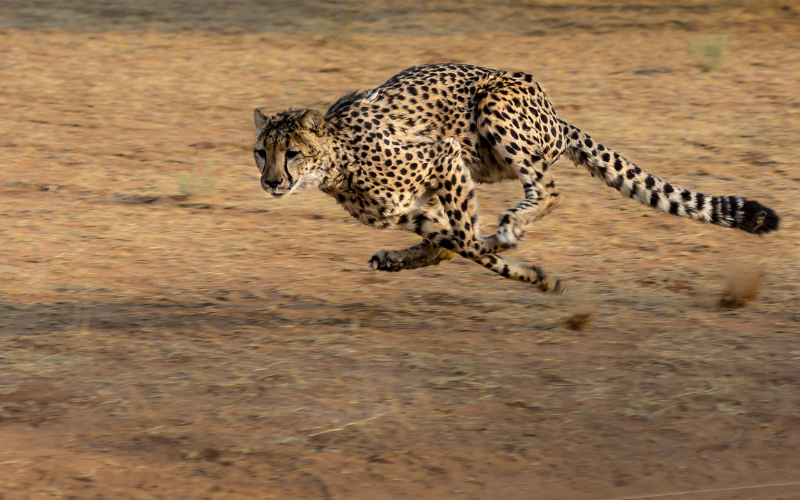The Cheetah: Africa's Fastest Land Animal
The cheetah which is rather hard to see on a safari in Zimbabwe is a wild cat native to Africa, known for its exceptional speed and agility. With its slender body, long legs, and small head, it is the fastest land animal, capable of reaching speeds up to 70 mph (112 km/h).

As a carnivore, the cheetah feeds on various prey, including gazelles, impalas, and hares. Hunting by utilizing its speed, agility, and sharp eyesight, these solitary animals are active during the day and seek shelter in shade or dense vegetation at night.
Despite being a top predator, the cheetah's population has declined dramatically due to habitat loss and hunting. According to recent studies, the cheetah population has decreased by almost 30% in the last three generations. This decline highlights the importance of conservation efforts to preserve this unique and remarkable species.
Physical Characteristics
The cheetah's slender and muscular body is built for speed. It has a small head and a long, flexible spine that allows it to make sudden turns while running at high speeds. Its long legs and non-retractable claws provide traction and grip, enabling it to accelerate quickly and change direction with ease.
The cheetah's coat is tan with black spots, providing camouflage in the grasslands where it hunts. Its tear marks, which run from the corner of its eyes down to its mouth, help to reduce glare from the sun and improve its vision while hunting.
Habitat and Range
The cheetah's range includes most of sub-Saharan Africa, as well as a small population in Iran. They are typically found in open grasslands, savannas, and semi-arid regions. Cheetahs prefer areas with low vegetation cover, which allows them to spot their prey from a distance and gives them room to run.
Unfortunately, the cheetah's habitat is under threat from human activities such as agriculture, urbanization, and hunting. As a result, cheetahs are now considered a vulnerable species and are protected by international law.
Behavior and Diet
Cheetahs are diurnal animals, meaning they are active during the day. They are solitary hunters, except during mating season, and typically hunt smaller ungulates such as gazelles, impalas, and springboks. However, they are also known to hunt larger animals such as wildebeest, ostriches, and smaller predators like hares and birds.
Cheetahs rely on their incredible speed to chase and catch their prey. They can accelerate from 0 to 60 mph (97 km/h) in just a few seconds, and can maintain high speeds for short distances. Once they catch their prey, they suffocate it by biting its throat or snout.
Conservation Efforts
The cheetah's population has declined dramatically in recent years, with estimates suggesting that there are only around 7,000 cheetahs left in the wild. Habitat loss, hunting, and human-wildlife conflict are the main threats to their survival.
Conservation efforts are underway to protect the cheetah's habitat and prevent hunting. These include the establishment of protected areas, community-based conservation programs, and education and awareness campaigns.
By supporting these efforts, we can help to ensure that the cheetah continues to thrive in the wild and that future generations can appreciate this unique and remarkable species.
